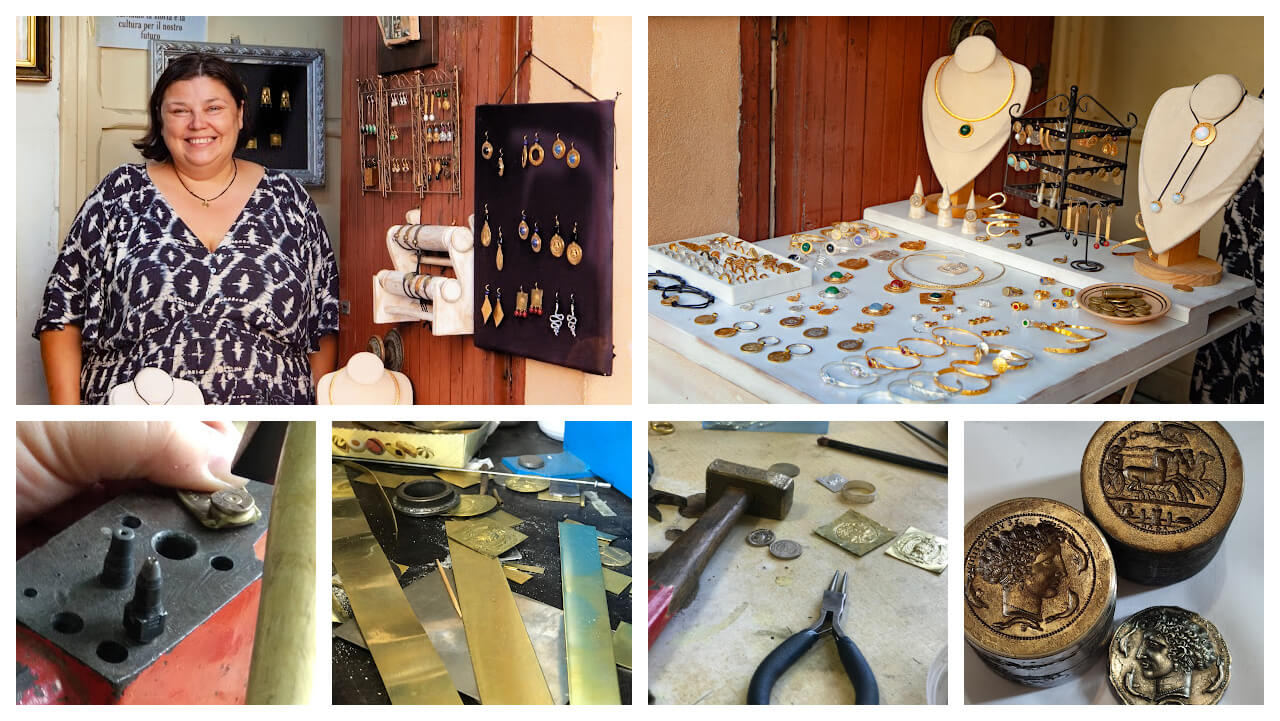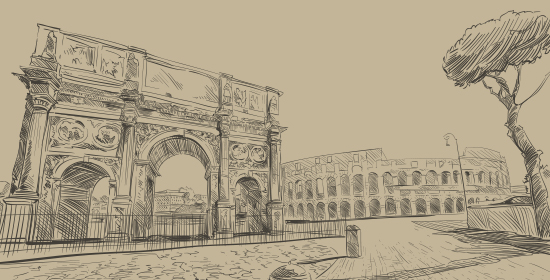Ceri: Must-See Charming Italian Medieval Hamlet Frozen in Time (near Rome)

PRO TIP: For some of Italy's must-see charming Italian medieval hamlets near Rome save this article in your browser's “Italy" folder for easy reference during your trip planning. Discover our top-rated Rome Countryside Tours for a luxurious and comfortable exploration of Italy's most charming villages like Ceri!
Buongiorno and welcome to Stefano’s RomeCabs, Rome’s top-rated tour company for private tours in Italy, and Shore Excursions from Civitavecchia. Some of our Rome Countryside Tours, as well as Pre-Cruise Countryside Tours, and Post-Cruise Tours from Civitavecchia, include a stop in Ceri: a must-see charming Italian Medieval hamlet frozen in time. Hidden away in the picturesque Roman countryside, just a short distance from Rome, Ceri is the perfect spot for a leisurely lunch and a delightful stroll — or rather, a step back in time to the bygone Middle Ages!
Perched high upon a cliff's edge, the medieval hamlet of Ceri seems suspended in a world untouched by time's relentless march. Situated amidst the expansive terrain once inhabited by the ancient Etruscans, this quaint hamlet exudes tranquility. Embraced by its distinctive surroundings, Ceri emanates a sense of peace and seclusion.
What is a Hamlet?
A hamlet in the Middle Ages was a small, rural settlement that smaller and less significant than a village or town. These hamlets typically consisted of a small cluster of houses, with only a few households or families residing within them, often centered around a farm or a local lord's manor or castle. These borgos were typically surrounded by defensive walls and served as centers of agricultural and artisanal activity. In Ceri's case, it was originally a fortified village built atop a cliff for defensive purposes.
As you approach this medieval gem, your attention is captured by the rugged cliffs that cradle the village and the ancient battlements that once fortified it. Accessing Ceri entails navigating through a medieval gateway via a narrow street carved into the steep, rocky hillside.
The ascent is guided by traffic lights controlling one-way traffic, as the street is scarcely wide enough for a single vehicle to pass through at a time.
Ceri: A Must-See Italian Medieval Hamlet Frozen in Time

A Glimpse into Ceri's Ancient History
Although remnants of the ancient Etruscan civilization linger in the ancient history of the land, there are also clear indications of Roman influence. However, after the decline of the Roman Empire, this once-thriving village suffered a prolonged period of neglect and abandonment from the 4th to the 11th centuries due to widespread malaria outbreaks.
Rebuilt in 1236 atop earlier settlements, the fortified village emerged as Ceri, distinct from the ancient Caere Vetus (now Cerveteri). Positioned on a cliff for natural defense, it attracted settlers from nearby Cerveteri.
Throughout its history, Ceri witnessed changes in ownership, initially under the Roman Normans of Trastevere, then the Alberteschi, and later the Orsini counts of Anguillara. The Orsini fortified Ceri but faced destruction in 1503 during a siege led by Duke Valentino Cesare Borgia, leading to surrender by Giulio Orsini. So much drama for such a tiny village!

From Odescalchi to Torlonia: Ceri Castle's Enduring Heritage
Ceri's history is characterized by a series of transitions in ownership, spanning between the Cesis, Borromeos, and Odescalchis. In 1678, Borromeo sold Ceri to Livio I Odescalchi (also Lord of Bracciano Castle) for 437,000 scudi, granting him the title of Duke of Ceri.
Ceri was then sold to Count Giovanni Borromeos in 1712, authorized by Pope Clement X, then exchanged hands to Duke Giuseppe Serra before reverting to the Odescalchis in 1721, with Baldassarre Odescalchi holding the title from 1748 to 1810.
In the late 19th century, Ceri underwent a transformation when Don Alessandro Torlonia acquired it in 1883. Until his passing in 1886, Ceri served as his retreat for leisure, hunting, and archaeological pursuits. With no direct heirs, Alessandro Torlonia passed the dukedom to his son-in-law Giulio Borghese, establishing the enduring Torlonia-Borghese dynasty.
Today, Ceri Castle, also known as "Palazzo Torlonia" stands as a testament to Don Alessandro's legacy. Its picturesque gardens host weddings and events, while rooms within the palazzo and throughout the village provide accommodations. Ceri, with its rich history, remains a living canvas where the past seamlessly intertwines with the present.

Discover Ceri: Where the Spirit of Medieval Italy Thrives
Ceri proudly showcases its meticulously preserved medieval architectural legacy. The labyrinthine alleyways, sturdy stone dwellings, and the majestic castle all bear witness to its rich medieval heritage. Despite the passage of time, Ceri has admirably retained its medieval essence, ensuring the continuity of its character through the ages.
The Legend of San Felice (Saint Felix):
San Felice, revered as the patron saint of Ceri, was a Christian pope and martyr who faced persecution during the reign of Emperor Constantius II. Seeking sanctuary, he purportedly found solace in Ceri, and it's believed that his relics still rest within the Church of the Madonna di Ceri, which was dedicated to him around the year 370.
Sanctuary of Madonna of Ceri: Stories of History and Devotion
Overlooking Ceri's main square stands a treasure of profound significance: the Sanctuary of the Madonna di Ceri. This church was constructed atop the remains of an ancient pagan temple dedicated to the goddess Vesta.

The evolution of the Church of Ceri took a momentous turn when it became the custodian of the relics of San Felice. This pivotal event likely spurred the expansion of the church, transforming it into a grand structure with a nave, aisles, and a canopy to house the sacred relics.
Legends claim that the oxen refused to transport the saint's relics to Rome, ensuring their perpetual residence in Ceri. Today, the relics of the saint rest behind a grate high in the central nave, while the canopy once exhibited the image of S. Giovanni Calabria for veneration until October 2009.
In 1980, restorations of the church unveiled a remarkable discovery. Beneath layers of time, intricate frescoes dating back to the 12th century emerged, painted with vivid depictions of Old Testament scenes and narratives from the life of San Silvestro. Subsequent efforts in 1989 led to the recovery of additional frescoes on the right side of the nave, accompanied by the relocation of the altar of San Felice to the transept chapel.
The Chapel of Received Grace (Cappella delle Grazie Ricevute )
Discreetly on the right side of the church lies an unassuming chapel: the Capella delle Grazie Ricevute, or the "Chapel of Received Graces". This tiny chapel behind a door holds secrets that are both unexpected and profoundly touching.

The walls of this tiny chapel are adorned with the most unexpected things! On one small wall bulletin boards are covered with quite possibly hundreds of thumbnail photographs. These snapshots are not mere images; they are fervent pleas for miracles and blessings from the revered Madonna of Ceri. Each photo represents a cherished loved one, beseeching the intercession of Mary in their hour of need.
The chapel's walls are not just a plea for help; they are also a gallery of gratitude. Ex-voto offerings, including plaques, paintings, and other treasures, share stories of personal miracles and blessings attributed to Mary's intercession.
Stepping into this humble chapel is like entering a gallery of faith and devotion, where hope takes form, and gratitude finds its voice.
A Culinary Gem not to be missed
Unbeknownst to most travelers (except to our guests who have experienced Ceri firsthand on our tours), Ceri boasts two cherished family-owned restaurants, renowned throughout the region for their exceptional cuisine.

These local family-run restaurants, Trattoria Sora Lella and Trattoria La Rocca demonstrate a commitment to excellence, cooking up delectable meals steeped in tradition. Selecting fresh, seasonal local ingredients and following cherished family recipes passed down through generations, these restaurants epitomize the essence of Italian gastronomy.
A meal in Ceri is an experience not to be missed. While the village may offer just two dining establishments, the quality of their fare is unparalleled. A visit to Ceri promises an unforgettable culinary journey, where every bite is infused with the rich flavors and traditions of Italy.
Indulge in handcrafted jewelry
Tucked away along the picturesque streets of Ceri lies a true hidden treasure: the exquisite creations of local artisans Nadia Darmenova and her family. Each piece of SofiaLiubov jewelry serves as a tangible bridge to history, meticulously reproducing ancient coins of museum quality, spanning from the illustrious Etruscans to the revered Ancient Romans —both integral to Ceri's ancestry and Italy's rich heritage.
For those who read this blog but don't get to visit Ceri yet, you can also purchase these unique museum-quality pieces online on the SofiaLiubov jewelry Etsy shop.

A visit to Ceri feels like stepping into the pages of a fairytale, where a quaint village unveils centuries of history within its narrow streets. From the Bronze Age to the present day, Ceri's timeless charm captivates visitors, offering a glimpse into Italy's rich past.
In this enchanting wonderland, history comes alive with every stone and breeze, creating an unforgettable experience for all who wander its paths.
Interested in day tours from Rome, Shore Excursions from Civitavecchia, and Post Cruise Tours from Civitavecchia that go to Ceri? We invite you to visit our website and browse through our tours below:
Rome Countryside Tours / Shore Excursions from Civitavecchia that include a visit to Ceri:
- ROME TOWN & COUNTRY TOUR from Rome
- MEDIEVAL MAGIC COUNTRYSIDE day trip from Rome
- COUNTRYSIDE SPLENDOR day tour from Rome
Post-Cruise Tours from Civitavecchia that include a visit to Ceri
- POST-CRUISE ROME TOWN & COUNTRY TOUR from Civitavecchia
- POST-CRUISE COUNTRYSIDE SPLENDOR TOUR
- POST-CRUISE MEDIEVAL MAGIC from Civitavecchia
Thank you very much for reading our travel blog and for choosing RomeCabs for your private Italy tours and excursions. We look forward to showing you beautiful places in Italy!
